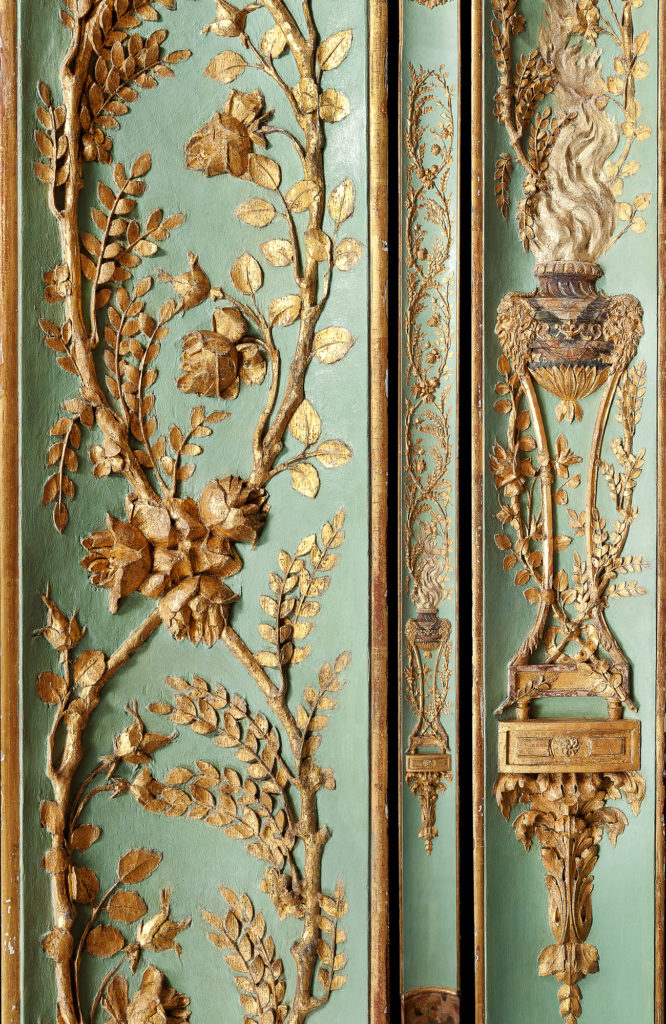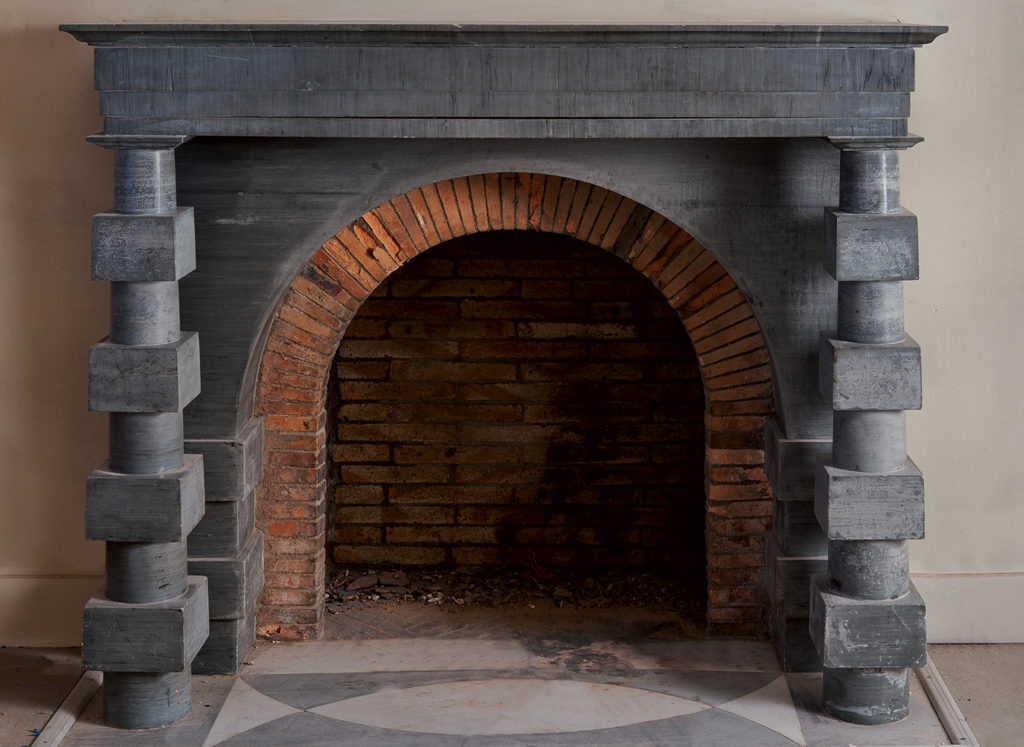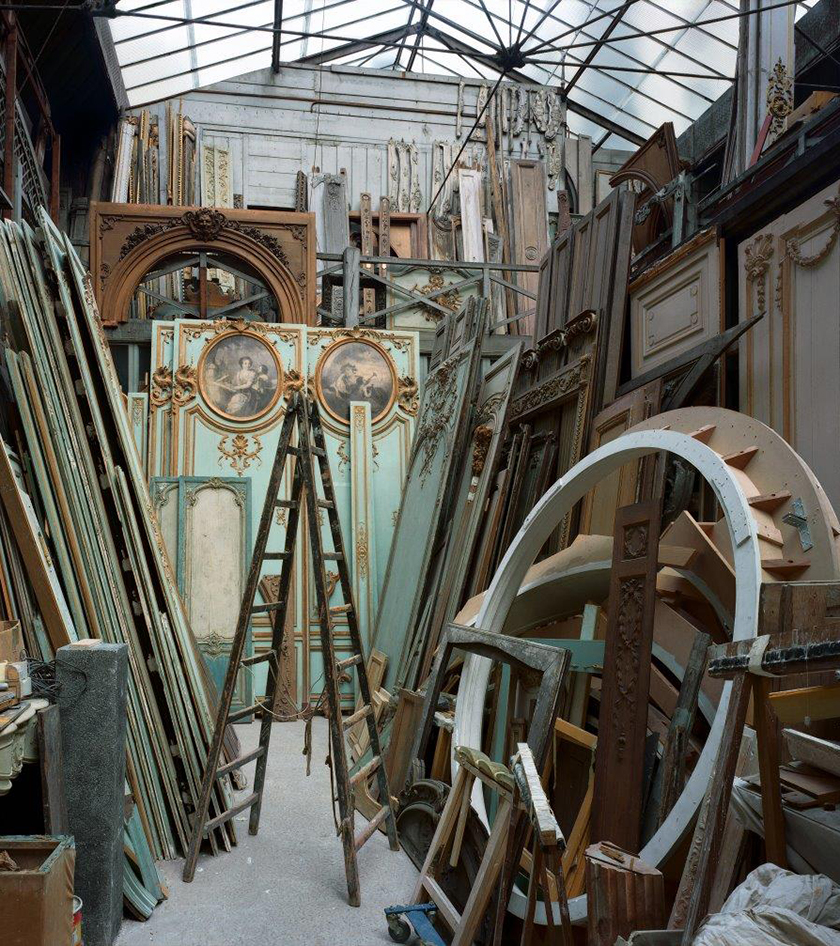A collection of historic boiseries
The patiently assembled Féau collection features rare and iconic pieces. It continues to expand over the years under the aegis of Guillaume Féau, who is passionate about collecting.
The priceless Féau collection reflects the firm’s spirit, its love of beauty, and the decorative arts. It offers a source of inspiration that is prized by interior designers all over the world.
Guided tour of the showroom at the firm’s Paris premises, under the great Eiffel glass roof where countless decors are gathered together.
A stroll around the showroom
A genuine private Museum, this space brings together over 200 pieces of paneling from the 17th to the 20th centuries. Féau’s teams love to linger here, searching for creative ideas. The firm’s owner, Guillaume Féau, cherishes this glorious setting, conducive to fruitful conversations with his clients.
Some interior designers and architects have become regulars in the meeting room, with its unique mixture of decors, made freely available to them during the design phase. As they present their work, their clients cannot fail to succumb to the charm of this place and its treasures.
In a video, Guillaume Féau pays homage to this magical place.


Paneling scheme by Émile-Jacques Ruhlmann for Lord Rothermere
“ Ruhlmann is the most famous interior designer and contractor of the Art Deco period. His boiserie decors are rare, and this one, designed in 1925 for Lord Rothermere’s apartment on the Champs-Élysées, is particularly refined. I love his decorative style that recalls the Vienna Secession, with the female figures, the carved details in the form of knucklebones, the three rows of dentils around the doors… I managed to purchase this scheme at an auction in Paris about a decade ago. I found it so extraordinary and was very surprised to be its only potential buyer.”
Guillaume Féau
This decor has since become part of the Louvre Abu Dhabi’s permanent collections. Its acquisition was organized by the director of the Paris Louvre, Henri Loyrette, together with Laurence des Cars, scientific director of the France Museum agency (charged with developing the Louvre Abu Dhabi), and Olivier Gabet, director of MAD—the Decorative Arts Museum in Paris. It continues to inspire Féau Boiseries for clients who favor the clean, modern look.
Pair of panels by Ledoux for the ballerina Guimard
“These parcloses (narrow separating panels) were found by chance, in a cupboard in a major contemporary art gallery in Paris. Yet they were once part of a set of famous decors, several elements of which are in the Louvre : the hôtel particulier of Marie-Madeleine Guimard, a dancer at the Paris Opera, who was a celebrity in 18th century Paris.
She had had this veritable palace built for her by Ledoux in the Chaussée d’Antin neighborhood. It constituted an extraordinary concentration of the enormous skill of the top artists of her time : doors painted by Fragonard, overdoors carved by Clodion…
These pot à feu motifs are ornamented with a little fleur de lys to indicate that the person for whom the decor was made had danced for the King at Versailles — the ultimate honor. Boiseries often contain coded messages.”
Guillaume Féau



Boiserie the “Four Continents” by Ledoux
“This 18th century decor comprises four carved panels that symbolize the four continents known at the time: a lion and an elephant’s head represent Africa; a dromedary and a Turkish hat indicate Asia and the Silk Road; a crocodile and a feather headdress refer to Amazonian America, and a prancing horse and Greek helmet embody Europe.
It has fascinated me ever since I was a child. In the book on the Jansen firm’s collections that my father used to let me flick through, it was the only one that my imagination could comprehend at the time, with all those wonderfully represented animals. I was lucky enough to be able to buy this boiserie scheme, which has become a significant element of Féau Boiseries’ decorative vocabulary.”
Guillaume Féau
This decor often inspires Féau Boiseries, being copied as well as reinterpreted for clients who appreciate the neoclassical way of mastering fantasy.

Marouflaged wallpapers and boiserie by Bélanger
“I’m a great admirer of François-Joseph Bélanger, architect to the Count of Artois (later King Charles X). He gave us, among other things, the Château de Bagatelle and its gardens. His style is extremely refined and at the same time poetic, almost dreamlike. He was very talented as an ornamentalist. These wallpapers are typical of the ones he had installed in his clients’ grand hôtels particuliers in the Chaussée d’Antin neighborhood toward the end of the 18th century. They are the only examples of this sort that are available on the art market. The material is very fragile. Very few have been able to be preserved. The preparatory drawings for them are in the Louvre.
This carved decor is also definitely Bélanger’s work. You can see his ornamental fluency in it, his way of making references to antiquity poetic, and combining them with contemporary elements such as a butterfly net or a parasol, in a perfectly balanced composition. This decor is absolutely in the spirit of Bagatelle.”
Guillaume Féau

Régence style panels with rosace
“These 18th century panels came into our collections 25 years ago. They’re very inspiring and powerful works, with their central rosace representing a sunflower. Without the cornicing or picture rail, this decor is already 4 meters (13 feet) tall. It must therefore have been intended for rooms with a ceiling height above 5 meters (16 feet).
This Régence boiserie scheme, reassembled in the 19th century, belonged to the great Bolivian collector Antenor Patiño, a discerning connoisseur of France’s “Grand Siècle” (from the early 17th to early 18th centuries, under Kings Louis XIII and XIV). It wasn’t painted when we acquired it : the wood was left its natural color, with gold highlights, in the 19th-century Rothschild taste. We opted for this interpretation, painted in celadon green, a color that was very fashionable in the mid-18th century.”
Guillaume Féau


Fireplace by Pierre Gouthière
“This fireplace from the late 18th century is fairly small, but it is so precious and refined that it is comparable to a jewel. The columns are a particularly virtuoso effort of setting marble in gilt bronze. This is a very tricky task because the stone can easily break. It’s jeweler’s work.”
Guillaume Féau
The fine quality of the bronze chasing is the trademark of the bronzeworker Pierre Gouthière, who was responsible for fireplace decors for Marie Antoinette at the Petit Trianon, and for Madame du Barry’s apartments at Fontainebleau, among others.


Fireplace by Emilio Terry
“This is one of the jewels in Féau Boiseries’ collection of fireplaces. Made of turquin blue marble and a refined two-tone hearth daringly combined with a brick firebox, it was designed by the legendary interior designer Emilio Terry (1890–1960). The ultimate master of styles, he invented an imaginary style for 20th century café society which he called ‘Louis XVII.’”
Guillaume Féau
The columns on the fireplace have an alternation of cylinders and cubes, paying tribute to the 18th century architecture of Claude-Nicolas Ledoux for his masterpiece, the Royal Salt Works at Arc-et-Senans, built in 1780.
Senans, built in 1780. This fireplace was made in the early 1930s for a hôtel particulier designed by Terry in Paris’s Boulogne-Billancourt neighborhood, where Edith Piaf and Marcel Cerdan lived during the following decade.

project with us
We are happy to hear from interior designers and decorators leading projects that require custom-made decorative schemes.






